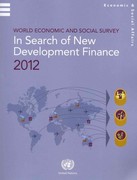Question
The sandbox industry is perfectly competitive and is composed of firms with the long-run cost function: c(y) = 20 + F + 6q + 5q2
The sandbox industry is perfectly competitive and is composed of firms with the long-run cost function: c(y) = 20 + F + 6q + 5q2 where F is a positive constant representing a mandatory accreditation fee es- tablished by the sandbox sellers association. The demand for sandboxes is given by D(p) = 900-2p. (a) Suppose F = 0 (no fee). What is the long-run competitive equilib- rium price and quantity? How many firms are there? 1
(b) If the association raises the fee to $25, what will occur in the short run to the market output, output per firm, profits per firm and market price? (If you are unable to compute this precisely, provide a description with graphs for partial credit). (c) In the long run, what will happen to the price, market output, out- put per firm, and number of firms? (d) What is the deadweight loss created by imposing the fee of $25? To do so, you will want to compare the total surplus (including the generated revenues from the fees) with the fee at each level. (e) Instead of a fee, the association decides to simply limit the number of firms in the industry to 276 firms by giving out (at no charge) that number of licenses. Use graphs of the market and representative firm to show (without specific numbers required) the area representing the deadweight loss and value of a permit. How does the deadweight loss from the permits compare to the deadweight loss from the $25 fee system?
Step by Step Solution
There are 3 Steps involved in it
Step: 1

Get Instant Access to Expert-Tailored Solutions
See step-by-step solutions with expert insights and AI powered tools for academic success
Step: 2

Step: 3

Ace Your Homework with AI
Get the answers you need in no time with our AI-driven, step-by-step assistance
Get Started


